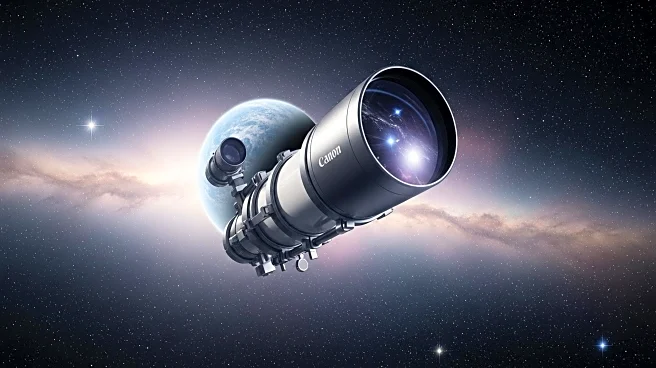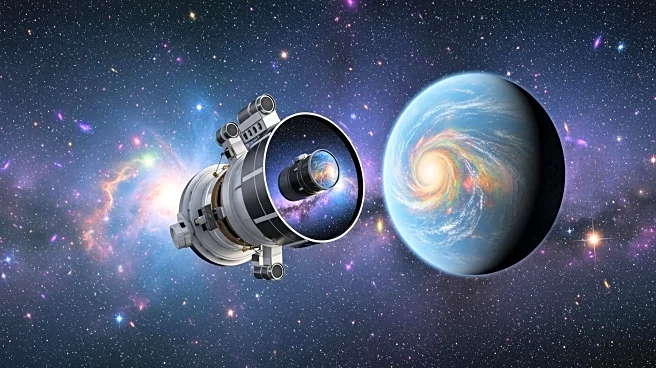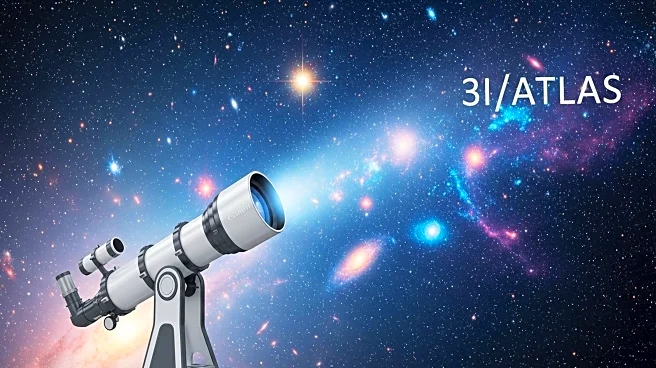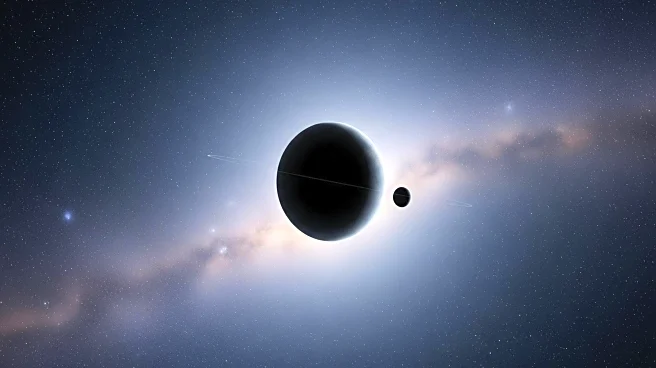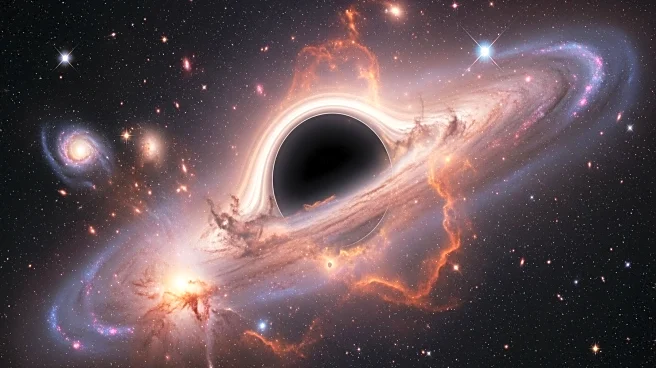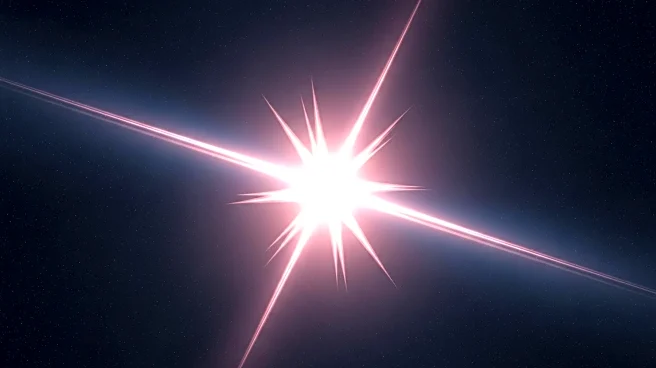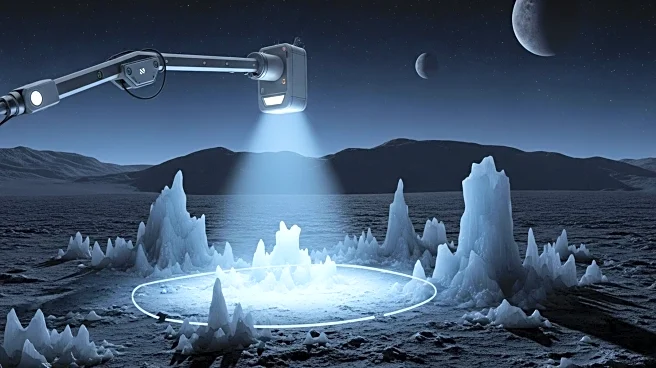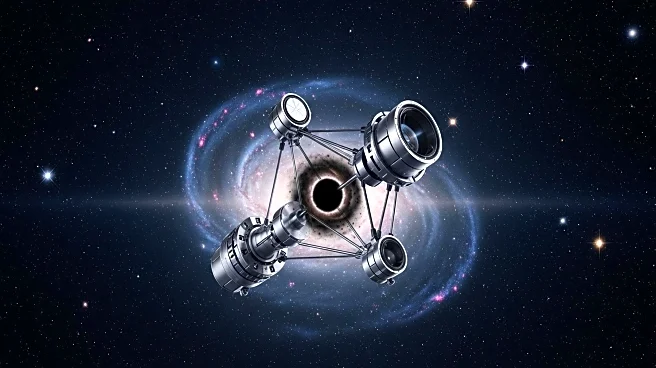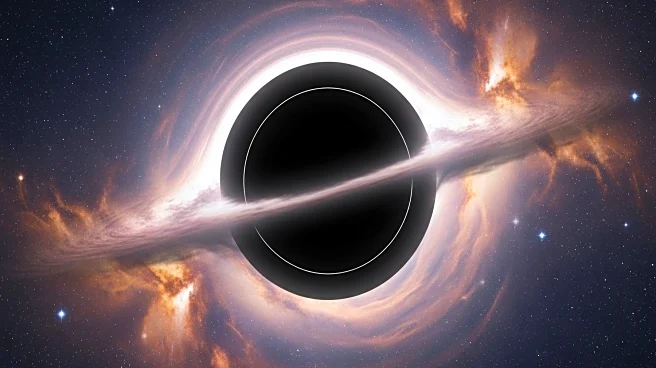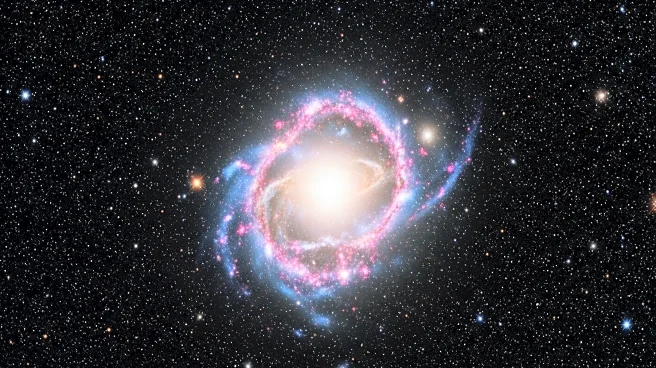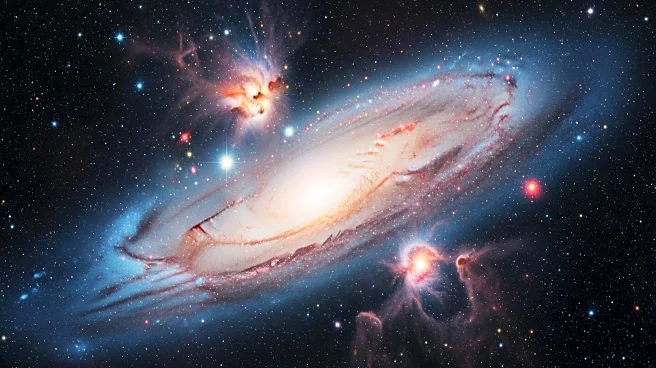What's Happening?
The James Webb Space Telescope (JWST) has discovered an exoplanet, PSR J2322-2650b, with an atmosphere composed almost entirely of carbon. This planet orbits a millisecond pulsar known as a 'black widow' star, which steals material from a neighboring star. The planet, a Jupiter-sized body, has an atmosphere rich in elemental carbon, including tricarbon and dicarbon, which is unusual for such systems. The planet's atmosphere shows significant differences between its day and night sides, with the day side reaching temperatures above 2000°C. The carbon-to-oxygen and carbon-to-nitrogen ratios are exceptionally high, challenging existing models of planetary formation.
Why It's Important?
The discovery of PSR J2322-2650b's carbon-rich atmosphere is crucial as it defies current scientific understanding of planetary formation in 'black widow' systems. Typically, such systems would have their outer layers stripped away by the pulsar's radiation, yet this planet retains a rich carbon atmosphere. This finding prompts a reevaluation of existing theories and models, potentially leading to new insights into planetary and stellar evolution. The data from JWST also provides the first observational evidence of western wind phenomena on rapidly rotating planets, contributing to atmospheric science.
Beyond the Headlines
The presence of a carbon-rich atmosphere on PSR J2322-2650b raises questions about the processes that could lead to such a composition. It suggests that there may be unknown mechanisms at play in 'black widow' systems, possibly involving white-dwarf mergers or other stellar interactions. This discovery could lead to a broader understanding of atmospheric dynamics and chemical compositions in extreme environments, influencing future research in astrophysics and planetary science.
